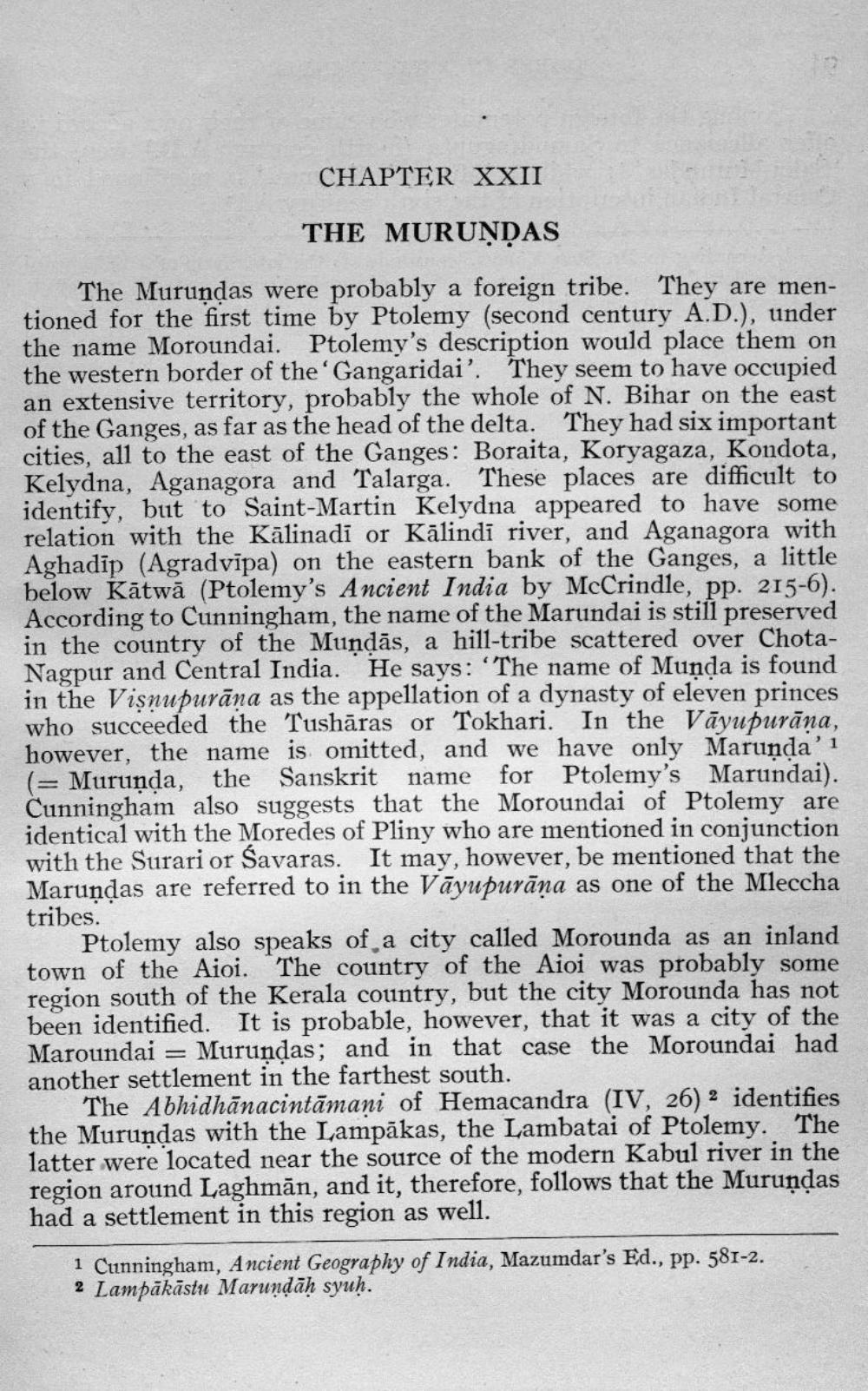________________
CHAPTER XXII
THE MURUNDAS
The Murundas were probably a foreign tribe. They are mentioned for the first time by Ptolemy (second century A.D.), under the name Moroundai. Ptolemy's description would place them on the western border of the 'Gangaridai'. They seem to have occupied an extensive territory, probably the whole of N. Bihar on the east of the Ganges, as far as the head of the delta. They had six important cities, all to the east of the Ganges: Boraita, Koryagaza, Kondota, Kelydna, Aganagora and Talarga. These places are difficult to identify, but to Saint-Martin Kelydna appeared to have some relation with the Kālinadi or Kālindi river, and Aganagora with Aghadīp (Agradvīpa) on the eastern bank of the Ganges, a little below Kātwā (Ptolemy's Ancient India by McCrindle, pp. 215-6). According to Cunningham, the name of the Marundai is still preserved in the country of the Muņdās, a hill-tribe scattered over ChotaNagpur and Central India. He says: "The name of Muņda is found in the Vişnupurāna as the appellation of a dynasty of eleven princes who succeeded the Tushāras or Tokhari. In the Vāyupurāna, however, the name is omitted, and we have only Marunda'i (= Muruņda, the Sanskrit name for Ptolemy's Marundai). Cunningham also suggests that the Moroundai of Ptolemy are identical with the Moredes of Pliny who are mentioned in conjunction with the Surari or Savaras. It may, however, be mentioned that the Marundas are referred to in the Vāyupurāna as one of the Mleccha tribes.
Ptolemy also speaks of a city called Morounda as an inland town of the Aioi. The country of the Aioi was probably some region south of the Kerala country, but the city Morounda has not been identified. It is probable, however, that it was a city of the Maroundai = Murundas; and in that case the Moroundai had another settlement in the farthest south.
The Abhidhānacintāmani of Hemacandra (IV, 26) 2 identifies the Murundas with the Lampākas, the Lambatai of Ptolemy. The latter were located near the source of the modern Kabul river in the region around Laghmān, and it, therefore, follows that the Muruņdas had a settlement in this region as well.
1 Cunningham, Ancient Geography of India, Mazumdar's Ed., pp. 581-2. 2 Lampākāstu Marundāḥ syuh.




